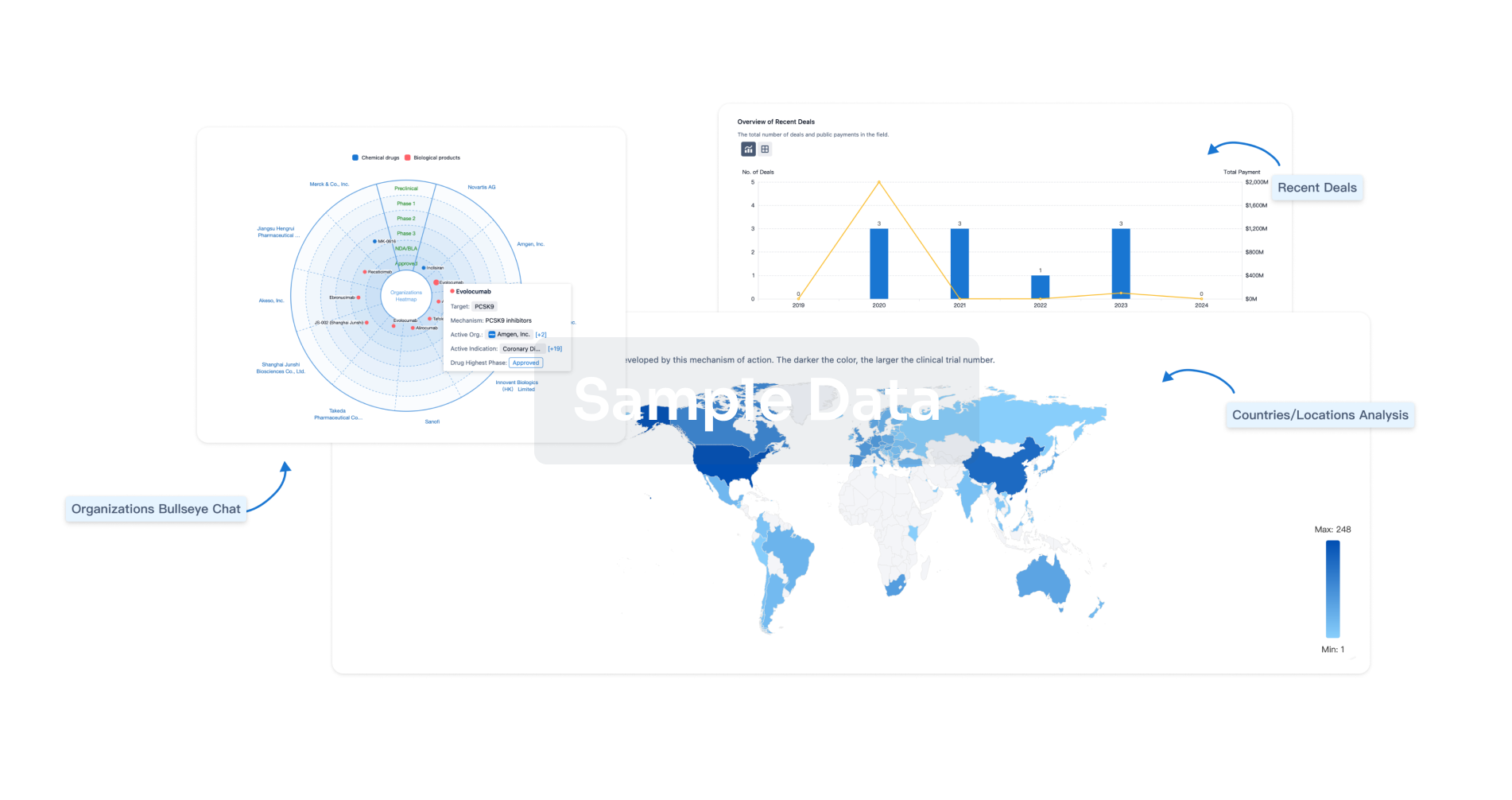Request Demo
Last update 08 May 2025
TBX19
Last update 08 May 2025
Basic Info
Synonyms dj747L4.1, T-box factor, pituitary, T-box protein 19 + [4] |
Introduction Transcriptional regulator involved in developmental processes. Can activate POMC gene expression and repress the alpha glycoprotein subunit and thyroid-stimulating hormone beta promoters. |
Related
100 Clinical Results associated with TBX19
Login to view more data
100 Translational Medicine associated with TBX19
Login to view more data
0 Patents (Medical) associated with TBX19
Login to view more data
213
Literatures (Medical) associated with TBX1901 Apr 2025·World Neurosurgery
Clinical and Radiographic Presentation and Surgical Outcomes of T-Box Pituitary Transcription Factor (TPIT) Silent Corticotroph Pituitary Neuroendocrine Tumors: A Multi-institutional Experience and Review of the Literature
Article
Author: Ruzevick, Jacob ; Peterson, Racheal ; Emerson, Samuel ; Ferreira, Manuel ; Failor, R Alan ; Weaver, Kathryn ; Gonzalez-Cuyar, Luis ; DeSantis, Anthony ; Hanks, Thomas ; Briggs, Robert G ; Zada, Gabriel ; Pathak, Asha ; Eaton, Jessica ; Garrett, Norman E ; Tyrtova, Evgeniya ; Cote, David J ; Fixman, Ben ; Raub, Spencer ; Nistal, Dominic ; Wisse, Brent
01 Apr 2025·Acta Radiologica
Multiple microcysts and clivus invasion diagnose T-box pituitary transcription factor 19 lineage adenomas in non-functioning pituitary adenomas
Article
Author: Zhao, Xuening ; Yuan, Mengyuan ; Chen, Lingxu ; Wang, Sihui ; Sun, Shengjun ; Wang, Xiaochen
01 Apr 2025·Clinical Neuropathology
Synchronous pituitary neuroendocrine tumors (PitNETs)/adenomas of triple SF1/PIT1/TPIT cell lineages with multiple hormone expression
Article
Author: Kiefer, Florian W. ; Hainfellner, Johannes A. ; Quinot, Valérie ; Herta, Johannes ; Stiglbauer-Tscholakoff, Alexander
Analysis
Perform a panoramic analysis of this field.
login
or

AI Agents Built for Biopharma Breakthroughs
Accelerate discovery. Empower decisions. Transform outcomes.
Get started for free today!
Accelerate Strategic R&D decision making with Synapse, PatSnap’s AI-powered Connected Innovation Intelligence Platform Built for Life Sciences Professionals.
Start your data trial now!
Synapse data is also accessible to external entities via APIs or data packages. Empower better decisions with the latest in pharmaceutical intelligence.
Bio
Bio Sequences Search & Analysis
Sign up for free
Chemical
Chemical Structures Search & Analysis
Sign up for free